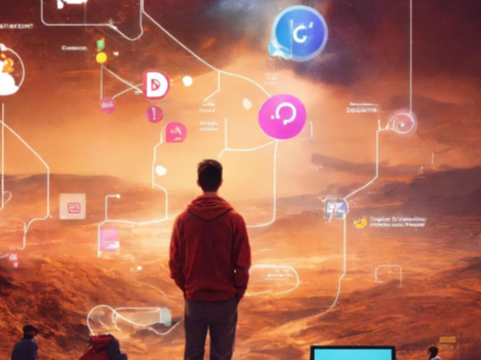Must-Have Tools Every Trade Show Manager Should Know
Let’s be honest: managing a trade show is more than creativity and branding. It’s logistics. Spreadsheets. Deadlines. Last-minute curveballs. And a lot of caffeine.
The work and pressure remain constant, irrespective of the size of the floor – whether it’s a 10×10 booth or an entire pavilion. But, with the right trade show management tools – software, apps the task becomes relatively easier, for sure.
These tools are practical, tested ones that help you stay organized, communicate better, track what matters, and keep your team aligned before, during, and after the show.
Let’s dive in to explore what actually works, and what you should consider using for your next big event.
1. Project Management Tools: Get Everything in One Place
(Think: Asana, Trello, ClickUp, Basecamp)
You need a platform where all your team can be onboard to track tasks’ progress, deadlines, and ownership in one place. Your inbox or sticky notes are definitely not the place for that.
Why it matters:
- Visual Timelines: Keep a track of the pre-show timeline with Gantt charts or task boards. It’s crucial for a successful show that everyone should know what’s due and when.
- Assign Work Clearly: From booth build to swag orders, assign each task to a person with due dates and attachments.
- See the Big Picture: Tag tasks by show, department, or urgency. Filters keep things from falling through the cracks.
- Built-in Communication: Organise and streamline communication channel. Your interaction shouldn’t be spread across email threads. Every task has its own space for updates and questions.
Bonus: Tools like ClickUp and Asana integrate with Google Drive, Slack, and your calendar. Less chaos, more clarity.
2. Trade Show Management Software: Built for This Exact Job
(Think: ExhibitForce, ShowGo, a2z)
General project tools are helpful, but if you manage multiple shows or complex builds, you’ll want software made specifically for trade show teams.
What these tools do well:
- Booth & Show Tracking: Track what booth size you’ve reserved, at which shows, with key contacts and deadlines logged.
- Inventory Management: Know which assets are being used where; no more shipping your best banner to the wrong city.
- Show Calendars & Budgets: Keep a pulse on what’s coming up and what’s being spent across your full event roster.
- Vendor Coordination: Central hub to assign tasks and track deliverables with your booth builders, designers, and printers.
If you’re managing a trade show program across multiple markets or business units, this is your control center.
3. Digital Asset Management: Keep Everyone on Brand
(Think: Dropbox, Google Drive, Brandfolder, Bynder)
One of the biggest sources of pre-show panic? Someone uses the wrong logo. Or worse, the wrong product image. That’s where a solid DAM (Digital Asset Management) system saves your neck.
Use these for:
- Centralized File Access: Give the team one place to find approved images, videos, and marketing content.
- Version Control: Avoid mix-ups by keeping only the latest versions of decks and graphics available.
- External Sharing: Share folders with agencies or printers without email attachments or expired links.
- Asset Organization: Tag by product, campaign, or event to make retrieval fast and painless.
Dropbox or Drive are solid basics. For enterprise-level brand control, Brandfolder or Bynder give you even more control.
4. Lead Capture Tools: Don’t Just Collect—Connect
(Think: iCapture, Cvent LeadCapture, HubSpot integration)
You spent thousands to get in front of your audience. So why let your lead process flop? No fishbowls. No business cards you’ll lose. Use digital tools that capture clean data, fast.
These tools help you:
- Scan Badges or QR Codes: No typing required. Just tap and save.
- Qualify on the Spot: Add tags like “hot lead” or “needs follow-up” right at the booth.
- Sync to CRM: Push data directly into your sales pipeline. No manual entry, no delays.
- Capture Notes or Voice Memos: Let reps jot quick reminders about conversations that actually help sales teams follow up.
iCapture is lightweight and easy. Leadature is better for larger, more integrated programs.
5. Communication Platforms: Stay Connected in Real Time
(Think: Slack, Microsoft Teams, WhatsApp)
During the show, things change fast. Someone forgot the iPad charger. A client is arriving early. The crate’s late. Your team needs a way to talk fast without yelling across the booth.
Why you need one:
- Group Channels: Organize chats by team (marketing, sales, logistics). Keep everyone looped in without overload.
- Voice & Video: Hop on a call without leaving the show floor if needed.
- File Sharing: Send PDFs, schedules, or setup diagrams instantly.
- Post-Show Wrap-Ups: Keep the convo going for debriefs, lead sorting, and recap docs.
Pro tip: Create a dedicated channel for each trade show, then archive after.
6. Booth Design & Floor Planning Tools
(Think: SketchUp, EXPOCAD, AllSeated)
Before your booth gets built, you need to visualize it. These tools help you design a layout that actually works, spatially and strategically.
What they help with:
- 3D Layouts: See your booth in context on the actual show floor. Avoid blind spots and traffic blockages.
- Booth Flow Design: Map visitor paths through demos, meeting areas, and engagement zones.
- Vendor Collaboration: Share designs with your builders so they get the details right the first time.
- Compliance Checks: Some software includes power access, signage height, and rigging restrictions built in.
SketchUp is great for quick concepting. EXPOCAD shines for exhibit managers overseeing multiple builds.
7. Event Marketing Platforms: Promote and Track Attendance
(Think: Bizzabo, Splash, Cvent)
If you’re planning your own event, speaking session, or VIP dinner at a trade show, you’ll need tools for invites, RSVPs, and follow-up.
What these platforms do:
- Email Invitations & Reminders: Branded templates, automated sequences, RSVP tracking.
- Landing Pages: Create microsites for your event or booth activations.
- Registration Management: Know who’s coming, who showed up, and what they interacted with.
- Post-Event Analytics: See what messaging worked and where attendees came from.
8. Shipping & Logistics Tools: Don’t Lose Another Crate
(Think: uShip, FedEx Trade Networks, Freightview)
Shipping your booth is stressful. Crates, customs, paperwork; it’s easy for things to get lost or delayed. Use tools that give you more control and fewer surprises.
Why they matter:
- Track in Real Time: Know exactly where your booth materials are at all times.
- Compare Quotes Easily: Get pricing across freight carriers to save on costs.
- International Support: Handle customs, carnets, and duty fees without hiring a separate agent.
- Paperwork Storage: Keep shipping docs stored in one place to avoid frantic email searches.
If you’re shipping to international shows, FedEx Trade Networks is a lifesaver.
9. On-Site Tools: Stay Organized On the Floor
(Think: Evernote, Google Keep, Show apps)
On the floor means executing what you have prepared. These simple tools help you and your team stay focused, track tasks, and avoid forgetting anything important.
Helpful options include:
- Mobile Checklists: Use Google Keep or Evernote to create setup and teardown checklists your team can check off in real time.
- Show Apps: Many expos have their own apps with maps, schedules, and alerts. Download these early.
- Shared Notes: Jot down ideas, competitor insights, and in-booth observations for your post-show recap.
- Quick Doc Access: Store important docs like floor plans or product info in Dropbox or Google Drive for instant access.
These simple tools make a big difference.
10. Reporting & Analytics Tools: Know What Worked
(Think: HubSpot, Salesforce dashboards, Google Data Studio)
After the show, it’s time to prove ROI. That means tracking leads, deals, meetings, costs, and engagement, not just gut feelings.
Use reporting tools to:
- Track Conversions: From lead capture to closed deals, know what came out of the event.
- Measure Engagement: How many demos ran? What swag was popular? What booth zones drew the most traffic?
- Compare Shows: Look across your calendar to see which events brought real results.
- Justify Budgets: Use hard data to defend costs and get buy-in for future shows.
Pro tip: Create a template for post-show wrap-up reports with metrics that matter to sales and exec teams.
Tools Don’t Replace Strategy—They Amplify It
Trade shows can be overwhelming in terms of resources, be it finances or team. Managing all aspects to deliver a successful execution demands clarity and streamlining so that the whole team is on the same page. Using trade show management software and tools means your team can focus on the bigger picture: your product, your people, and your presence.
The goal isn’t to stack up software. It’s to build a system that helps your team do their best work. Because when the logistics run smoothly, you get to show up strong, sharp, and ready to win.
Ready to Plan Like a Pro?
At Muller Expo, we help brands make an impactful presence at the trade show not just by building great booths, but creating an entire trade show ecosystem that works smarter.
Contact us to guide you in choosing the right tools, vendors, or strategies for next trade show and make it your most efficient (and effective) one yet.






